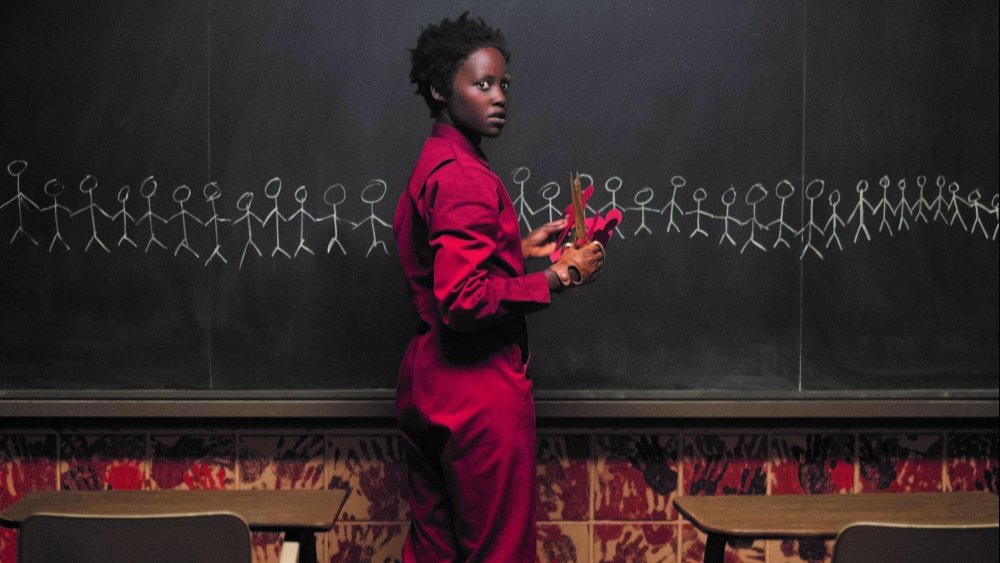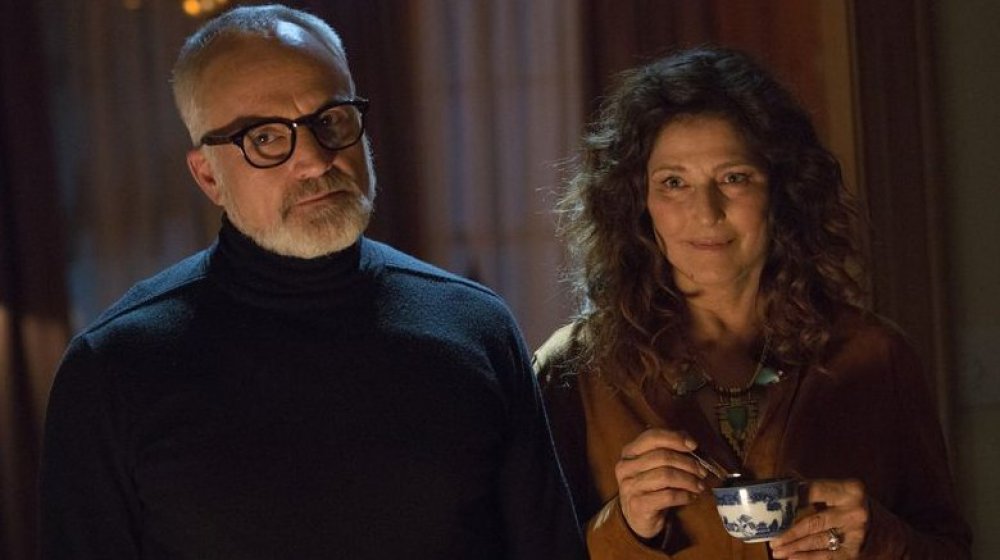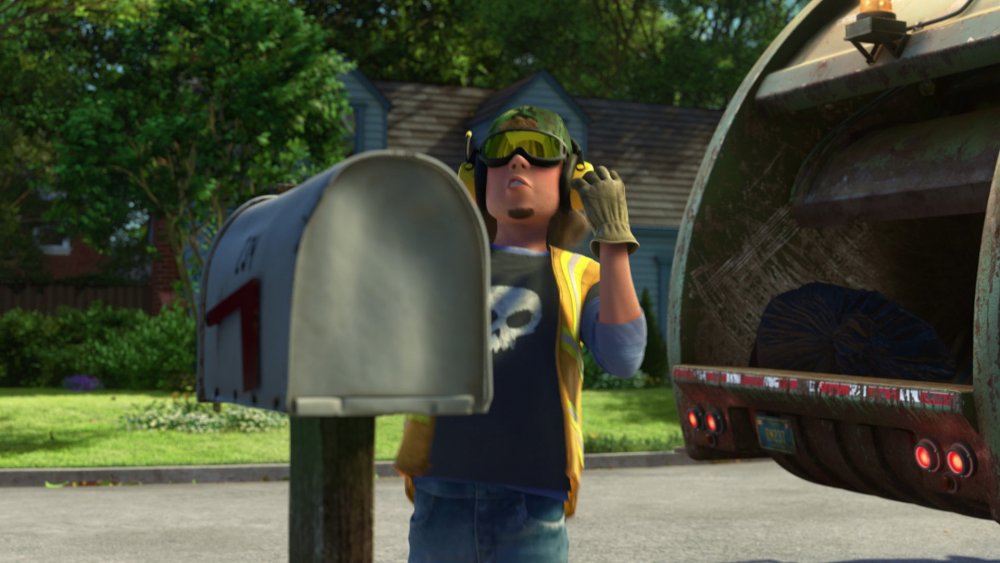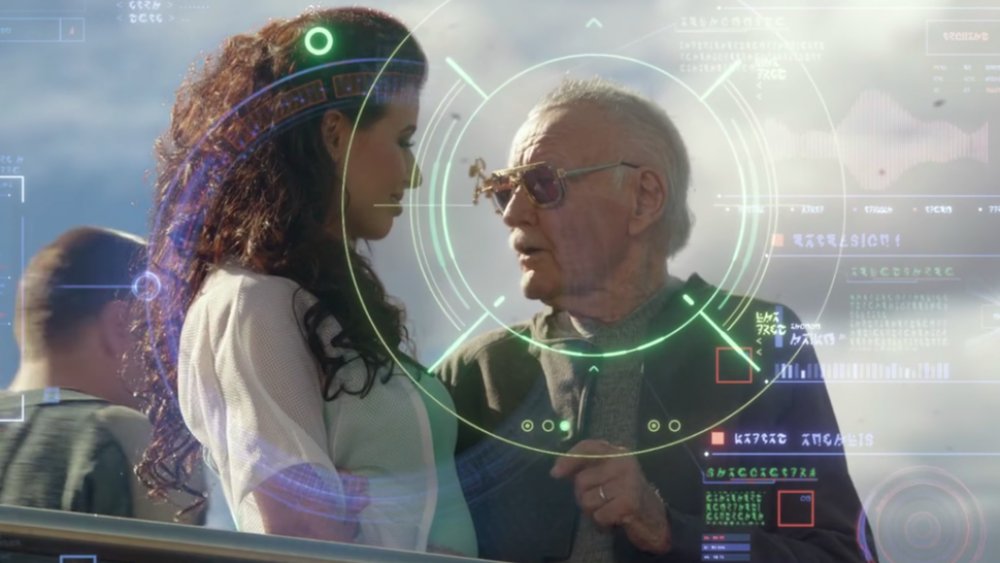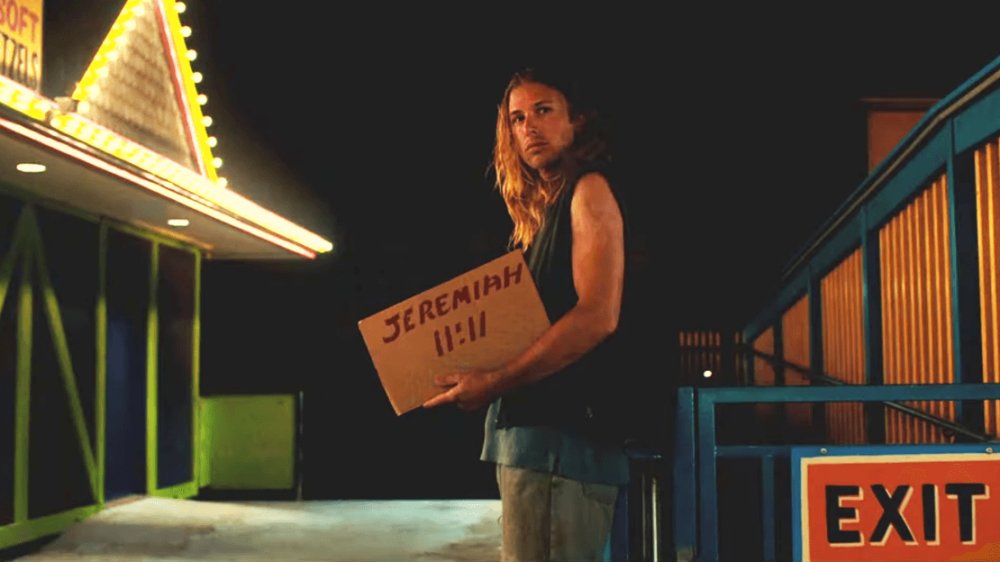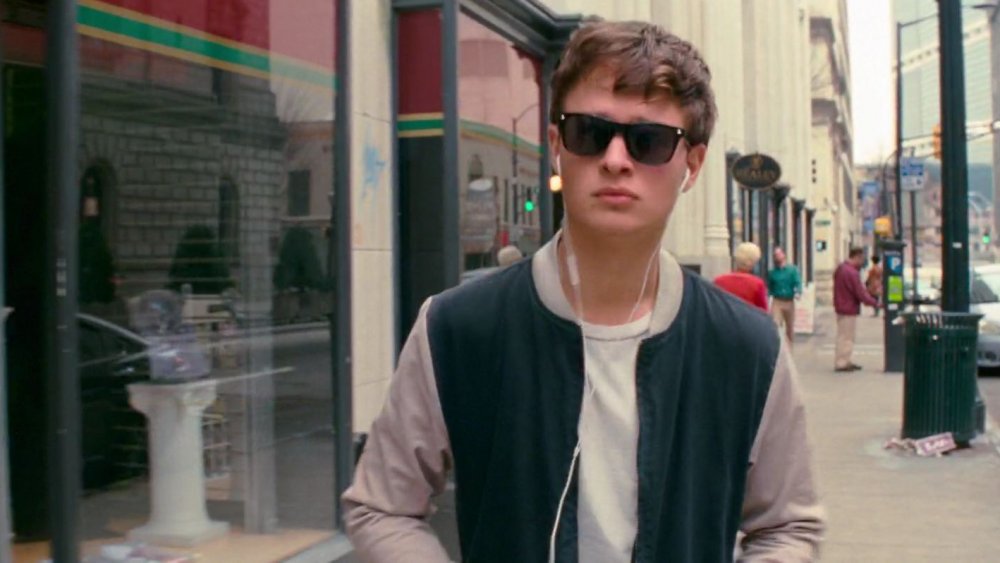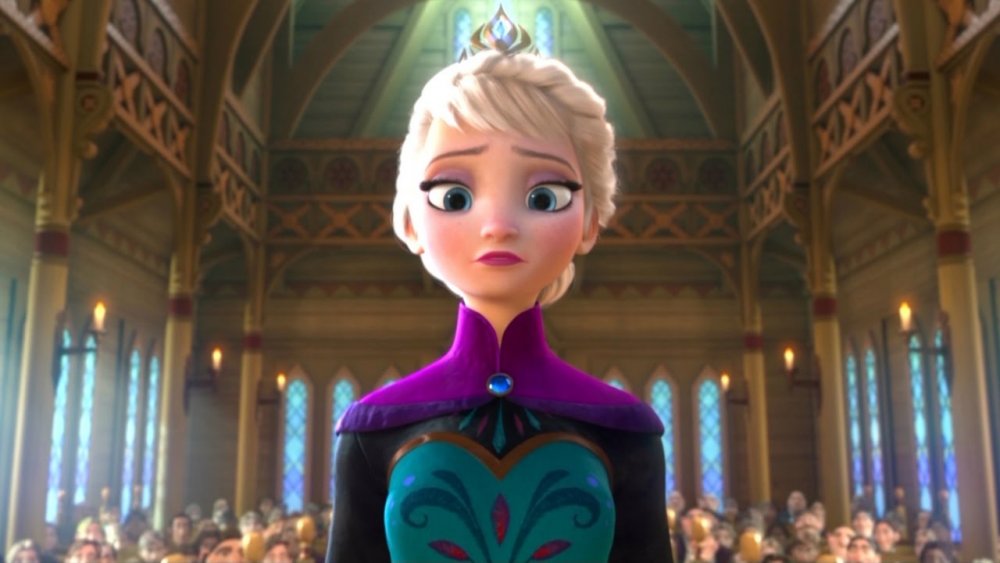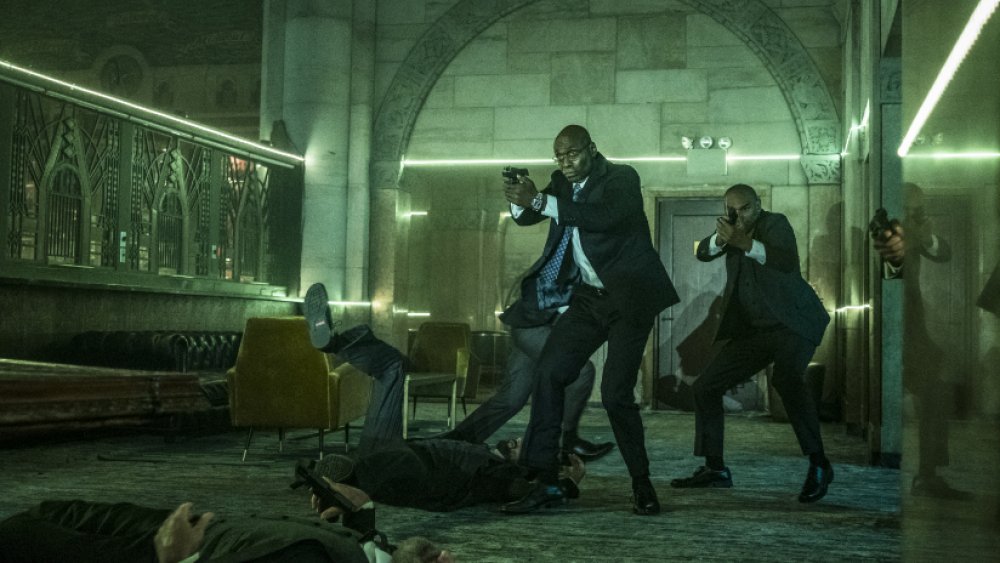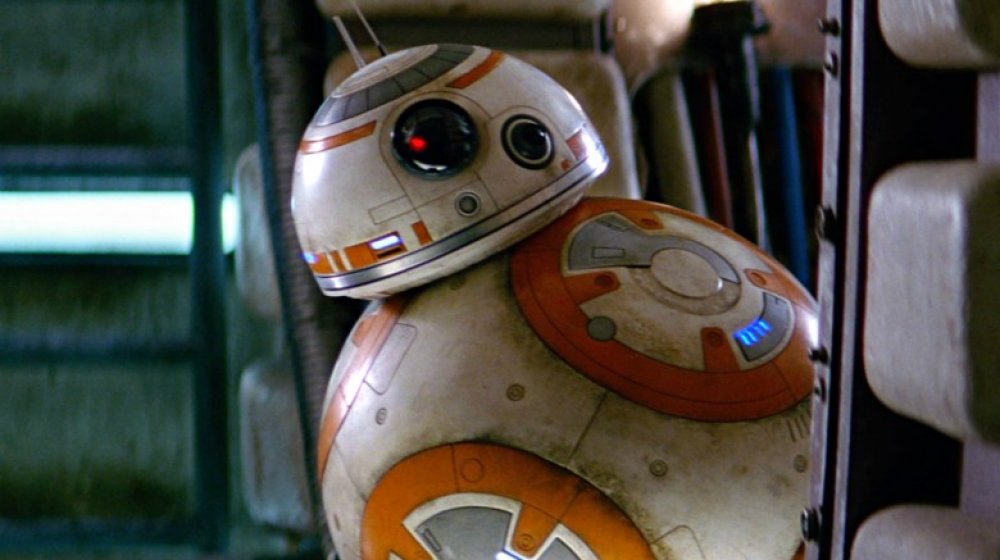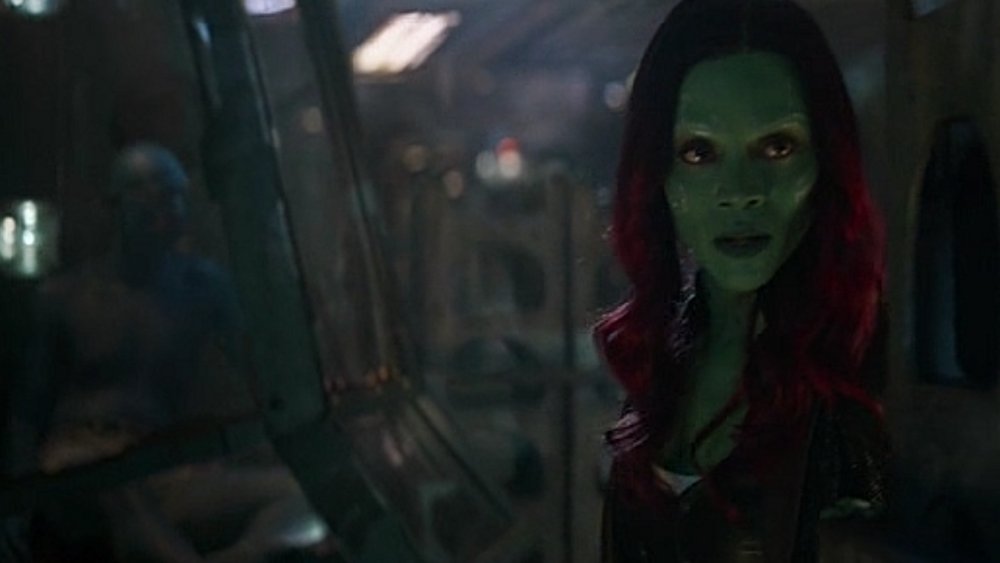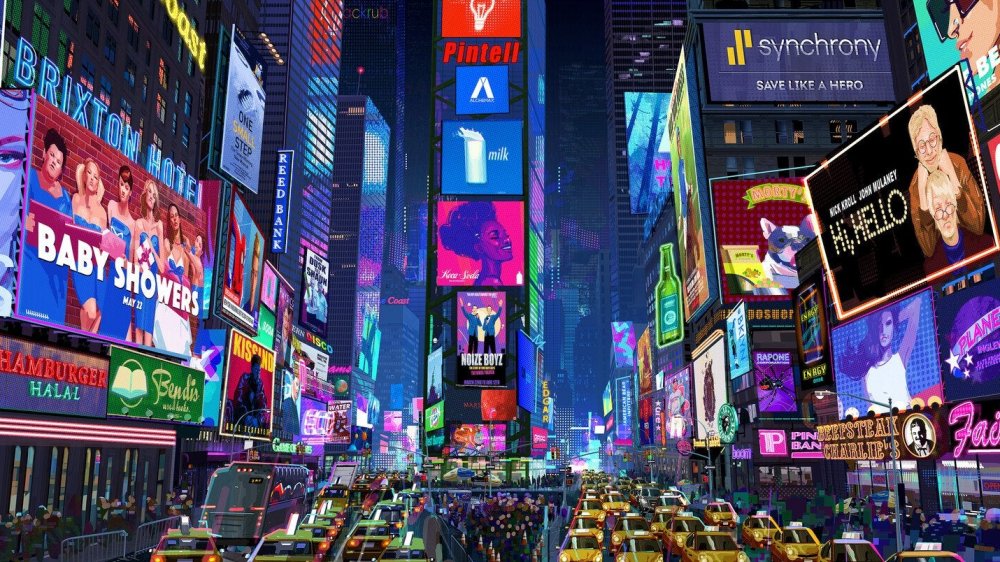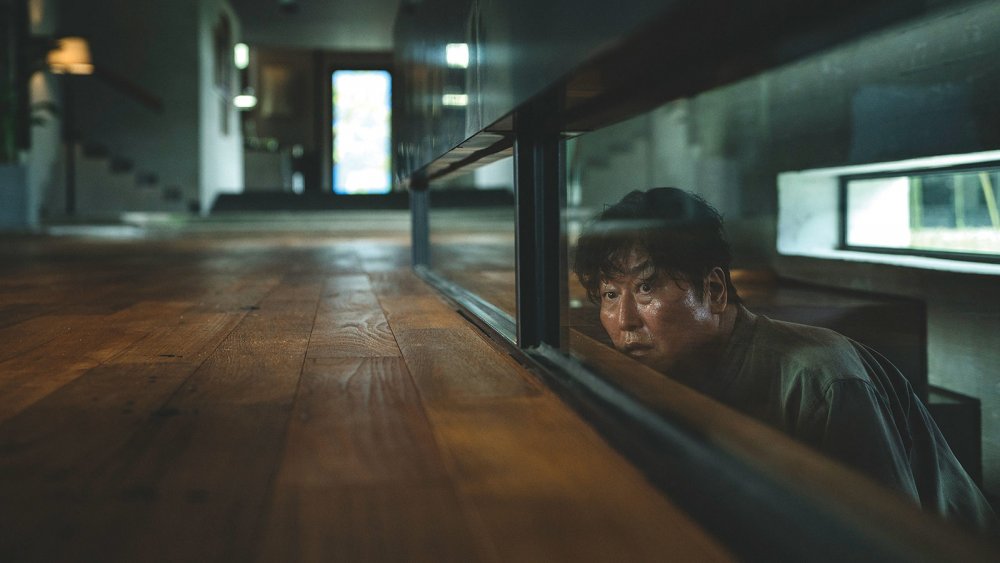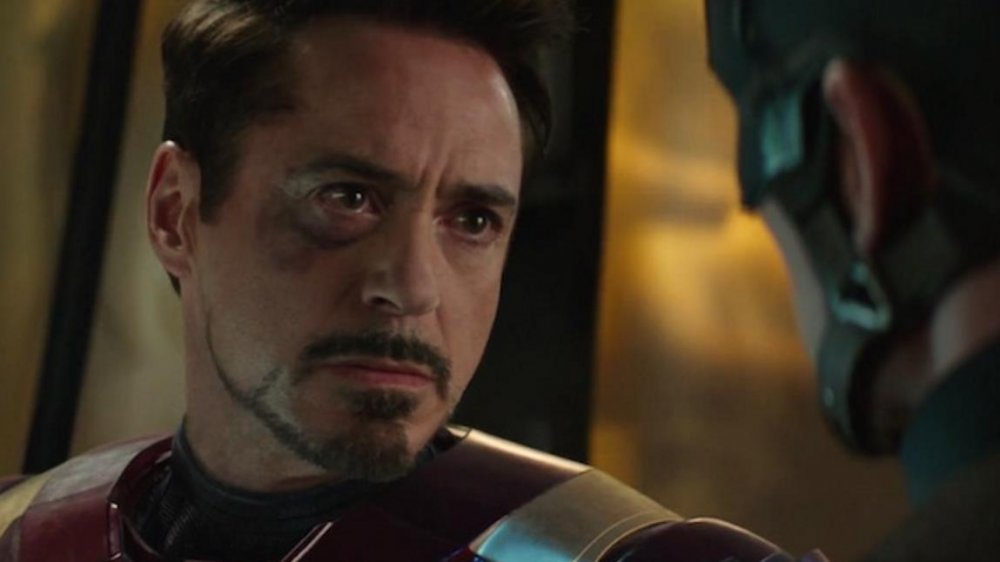The Most Brilliant Easter Eggs Of The Last Decade
Watching a film for the very first time can be an incredible experience, but for many curious fans, there's no better way to watch a movie than to tirelessly pore through it to find different pieces of trivia, clues, and neat Easter eggs that provide even more depth to the story. Many of the decade's very best films definitely merit repeat viewings, and eagle-eyed audience members will likely be rewarded by the extra layers of storytelling they can find as they continue to explore their favorite films.
From secret songs to gunshot sonatas, from returning characters to television references, some of the decade's strongest cinematic offerings are packed full of small details you might have missed the first time around. As we leave the 2010s behind, it's a perfect time to cue up your favorites and see what you might be able to find. To get you started, here are some of our favorite brilliant Easter eggs of the last decade. Major spoilers for all of these films to follow!
Secret signals tell you to Get Out
Jordan Peele's impeccable 2017 directorial debut Get Out — which went on to make Peele the first ever African American filmmaker to win an Academy Award for Best Original Screenplay — wowed audiences with its layered, complex plot. In the film, when Chris (Daniel Kaluuya) goes to visit his girlfriend Rose's (Allison Williams) family for a weekend, he's worried at first that her white family might not take kindly to him; ultimately, they like him way too much, as it turns out that the family's intense fetishism has led to them taking black bodies and claiming them for themselves.
The procedure, which places the mind of a wealthy white person inside the body of a black captive, requires hypnosis, which is always performed by Missy (Catherine Keener), Rose's mother. Though you don't find out about Missy's hypnotic talents until partway through the film, on your second viewing, you might be able to catch a clue: when she bumps her spoon on a teacup in the beginning of the movie, the housekeeper, Georgina (Betty Gabriel) momentarily wakes from her slumber. That's just the tip of Peele's Easter egg iceberg, however; from the song in the opening credits (which, in Swahili, urges the listener to "run") to a clever ruse by Rose at the film's start, Get Out offers a plethora of small details cleverly placed there by Peele.
A familiar face in Toy Story 3
Pixar is notorious for its numerous Easter eggs, sneaking references to past and future films into its current releases ever since even before the studio began its odyssey into feature-length animation in 1995 with the original Toy Story. From the Pizza Planet truck to a bouncy ball that appears in every single Pixar project, the Toy Story sequels in particular are packed full of sly references.
2010's Toy Story 3, is one of Pixar's very best efforts, features one of the smartest (and saddest) Easter eggs in the studio's history. As Andy grows up, his toys — including Woody (Tom Hanks) and Buzz Lightyear (Tim Allen) — must adjust to the fact that their owner doesn't really need them anymore. Though Andy intends to bring at least Woody to college with him, all of the toys fear the possibility of winding up in the trash. One of the many reasons that's a horrifying prospect is the garbageman himself. Check out his shirt — it's Sid, who terrorized the toys back in the first Toy Story installment. Pixar's motifs are always quite intentional, so though he's never named, it's pretty clear that he grew up to work in trash removal, fatefully symbolizing the grim fate that strikes fear into the heart of Andy's childhood toys.
Stan Lee's hidden language
One thing shared by nearly every film in the Marvel Cinematic Universe — beyond their shared sense of humor and wit — it's that before his death in 2018, Marvel legend Stan Lee appeared in a cameo role in every single MCU film. From a World War II veteran in Avengers: Age of Ultron (which he later said was his favorite cameo) to a bartender in Ant-Man to a casino patron in Black Panther, Lee always took the time to appear in the world he helped to create, in a tradition missed by millions of fans now that the legend has passed away.
However, one of his cameos is particularly special, thanks to a super-clever Easter egg for diehard fans. In the first Guardians of the Galaxy film, director James Gunn snuck a hidden detail into Lee's short cameo. As Lee's character flirts with a beautiful young woman, text appears next to his head as Rocket Raccoon (voiced by Bradley Cooper) examines him with a scanning device. As it turns out, the text is the Skrull word for "Excelsior," which, of course, is Lee's signature phrase.
Double vision in Us
Jordan Peele's sophomore film Us is filled with doubles — specifically, underground doppelgangers, which confront and attempt to murder their above-ground counterparts while clad in red jumpsuits. While the Wilson family (led by Lupita Nyong'o and Winston Duke — both Black Panther alumni), successfully evade their doppelgangers, the audience is eventually let in on a horrifying truth. Nyong'o's Adelaide isn't who she says she is, and as it turns out, she's the clone who switched places with her double when the two of them were children.
Much like Get Out, the film is packed full of small details, with multiple references to Hands Across America (which the doppelgangers literally mimic at the end of the movie) and Michael Jackson's "Thriller" (which features zombie creatures much like the doppelgangers). The most obvious reference to doubles, however, is the number 11, which appears constantly throughout the film. One of the most prominent examples is the recurring Bible verse Jeremiah 11:11, but a young Adelaide also requests prize #11 after winning a carnival game (it's a "Thriller" shirt), Adelaide's son Jason notices that it's 11:11 shortly before the doppelgangers arrive, and Gabe (Duke) even watches a baseball game where the score is 11 to 11. The duality of the number 11 is a perfect fit for Us, but even so, it's thrilling to see how many times Peele was able to work it into the narrative.
Baby Driver's mimicry
Edgar Wright is known for his signature visual style and flair for genre pastiche, which he has previously displayed in films like Scott Pilgrim vs. The World and Shaun of the Dead. These tendencies were on perfect display on 2017's Baby Driver, which stars Ansel Elgort as Baby, a largely silent getaway driver for a crew of criminals led by Kevin Spacey's Doc, who orchestrates complex bank robberies with a small group of specialists. After he meets Debora (Lily James), Baby wants nothing more than to leave his life of crime behind, but unsurprisingly, Doc and his gang make that goal all but impossible.
Baby has very few lines during the film, preferring to keep his headphones in rather than speak to anyone. When he does talk, he actually mimics movies he's watched within the film, planting a clever Easter egg for careful viewers. In four different scenes, Baby repeats lines from everything from Fight Club to It's Complicated to Monsters Inc., covering a wide variety of influences before Doc finally calls him out on it.
Rapunzel shows up in Frozen
At the beginning of the decade, it may have seemed like Pixar had cornered the market on animated films. Still, their parent company, Disney, continued to reign supreme with hits like Tangled and Frozen. And as it turns out, two of Disney's biggest modern hits are actually connected.
Tangled, which retells the story of Rapunzel (Mandy Moore) as she escapes her mother's overprotective custody to live her own life, and Frozen, which sees sisters Anna (Kristen Bell) and Elsa (Idina Menzel) struggling to mend their fractured relationship while managing Elsa's potentially destructive powers, have more in common than most might think. At the beginning of Frozen, as the kingdom of Arendelle prepares for Elsa's coronation, two familiar guests appear quite briefly on screen — specifically, Rapunzel and her husband, Flynn Rider (Zachary Levi). There's a darker side to this Easter egg, thanks to a fan theory that circulated about Elsa and Anna's parents dying on their way to Rapunzel's wedding. Mandy Moore herself debunked the theory, making sure that both of these movies stay positive and this particular Easter egg remains a small, sweet connection between the two films.
John Wick: Chapter 2 makes violent music
As the original Matrix trilogy faded into the rear view, it took a while for Keanu Reeves to reclaim his throne as a bona fide action star. Luckily, the John Wick franchise kicked off in 2014, proving that he still had the chops to pull off huge action set pieces. After the first John Wick proved to be a huge success, a sequel was inevitable, and Reeves returned for John Wick: Chapter 2 and John Wick: Chapter 3 – Parabellum.
Out of the trilogy, John Wick: Chapter 2 arguably has one of the best Easter eggs in the entire franchise. During a climactic shootout at a museum, all of the gunshots follow the exact melodic pattern of Vivaldi's classic "Four Seasons." Director Chad Stahelski later confirmed this stylistic choice, proving that it's possible for fans of hard-hitting action and classical music enthusiasts to actually share some overlap.
"I have a bad feeling about this"
Over the years since George Lucas brought audiences to a galaxy far, far away in 1977 with the first Star Wars, the franchise has instituted some standard elements that fans can expect in every film. One of the most beloved Star Wars traditions is that each film within the three trilogies — the original trilogy, the prequel trilogy, and the sequel trilogy — contains one classic line: "I have a bad feeling about this."
Throughout the movies, everyone from Han Solo (Harrison Ford) to Luke Skywalker (Mark Hamill) to Princess Leia (the late Carrie Fisher) utters the line, but unless you listen carefully — or speak droid — you might miss its appearance in 2017's The Last Jedi. In this particular film, a human doesn't utter the line. According to director Rian Johnson, it comes from BB-8, the sequel trilogy's breakout droid star who speaks in bleeps and boops. It's clever to make Star Wars fans really hunt for their favorite line, and it's a particularly difficult feat to decipher BB-8's expressive language and realize the little droid gets the big line this time.
Infinity War is stuck in arrested development
As the Marvel Cinematic Universe continued to grow, it became clear that the only way to top The Avengers would be to bring together not just Earth's Mightiest Heroes, but warriors from across the galaxy. As the scale grew ever grander, Joe and Anthony Russo became the studio's go-to directors. The two brothers, who had mostly worked in television comedies before joining the MCU, brought fresh energy to increasingly ambitious superhero adventures. After entering the fray with Captain America: The Winter Soldier, they struck gold with Captain America: Civil War, and went on to direct the two-part event that is Avengers: Infinity War and Avengers: Endgame.
Though those last two films are bursting at the seams with every single fan-favorite Marvel movie star, they're also packed full of references to the brothers' previous work. Case in point: during Infinity War, when audiences get a glimpse at the Collector's (Benicio del Toro) collection of goods during the hunt for the Infinity Stones, a blue man in cutoff shorts is visible — a clear callback to the Russo Brothers' time on Arrested Development. It might not be Tobias Funkë himself, but anyone in the know will surely pick up on this clever reference to the Bluth family and their exploits.
Times Square in the Spider-Verse
Undoubtedly one of the most unique films of the entire decade, Sony's Spider-Man: Into the Spider-Verse breathed new life into the Spider-Man franchise while creating an entirely new animated vision of the iconic hero's universe that can exist alongside the live-action adventures of Tom Holland's Peter Parker. When a young Miles Morales (Shameik Moore) discovers that there are several Spider-Heroes working throughout multiple universes, he embarks on a journey of self-discovery alongside Spider-Woman (Hailee Steinfeld), Spider-Man Noir (Nicolas Cage), Peni Parker (Kimiko Glenn), Spider-Ham (John Mulaney), and a bedraggled Peter B. Parker (Jake Johnson).
Since Spider-Verse takes place in a slightly altered version of our own universe, it stands to reason that everything would just be a little bit different, and those tiny adjustments extend to Spider-Verse's version of New York City's Times Square. Among plenty of other cool Easter eggs, the posters in Miles' Times Square are just ever so slightly removed from our real pop culture, featuring posters for projects like From Dusk Till Shawn (a reference to Shaun of the Dead), Baby Shower (instead of Bridesmaids),and restaurants like Planet Inglewood (a stand-in for Planet Hollywood). There's even an ad for Clone College, an imaginary follow-up to Clone High, the real-world cult classic MTV series from Spider-Verse producers Phil Lord and Chris Miller.
Parasite's final song speaks volumes
At the beginning of Bong Joon-Ho's 2019 masterpiece Parasite, we meet the down-and-out Kim family, surviving on a wage paid by folding pizza boxes with no upward mobility in sight. Things start looking up when Ki-woo (Choi Woo-shik), the son of the family, gets a job as a tutor with the wealthy Park family, who live in an extraordinarily beautiful mansion in the best part of town. Before long, the entire Kim family ends up working for the Park family through a series of schemes — though the Parks have no idea that the Kims are related — and after a terrible, bloody ending to the union between the two families (which we won't spoil here), the Kims end up fractured and scattered to the winds.
As the film closes, Ki-woo writes a letter to his father, Ki-taek (Song Kang-ho), promising to buy the Parks' house one day, conjuring a fantasy of the two of them frolicking through the house. The movie's fairly ambiguous as to whether the son's dream comes true or not, but the song that plays over the closing credits might provide a clue. Bong Joon-Ho himself confirmed that the song, written in Korean, is titled "564 Years," which is exactly how long it would take the Kim family to save enough money to purchase the Parks' perfect house.
The Futurist of the Civil War
The strength of the Marvel Cinematic Universe's crossover efforts, including the Avengers films, relies on the strong chemistry between its leads. From Robert Downey Jr.'s Tony Stark to Chris Evans' Steve Rogers to Mark Ruffalo's Bruce Banner, everybody genuinely seems like they get along on and off screen, creating a real sense of camaraderie among these huge stars.
Thanks to their easy chemistry, it's clear that the stars don't shy away from sly references to all of their real-life projects — even ones that most audience members might have forgotten. A perfect example of this is during Captain America: Civil War, which finds several members of the Avengers at odds after a rift between Captain America and Iron Man. As Tony enters a scene late in the film, Hawkeye (Jeremy Renner) sarcastically announces to the room that "the futurist is here" — a line which could easily be taken as a reference to Downey's largely forgotten yet well-received 2004 jazz album. It's a small, cheeky reference, but it's still a perfect callback to Downey's varied career meant for the most intense fans.
